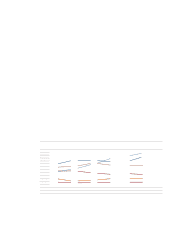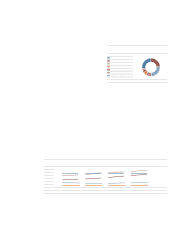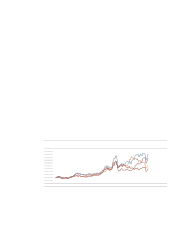BMW 2001 Annual Report Download - page 21
Download and view the complete annual report
Please find page 21 of the 2001 BMW annual report below. You can navigate through the pages in the report by either clicking on the pages listed below, or by using the keyword search tool below to find specific information within the annual report.001 BMW Group in figures
004 Report of the Supervisory Board
008 Supervisory Board
011 Board of Management
012 Group Management Report
029 BMW Stock
033 Group Financial Statements
098 BMW AG Financial Statements
104 BMW Group Annual Comparison
106 BMW Group Locations
108 Glossary
112 Index
20
In the area of engine development, the BMW
Group again underlined its leading position with the
new 12 cylinder engine. The new engine was pre-
sented to the general public for the first time at the
2001 Frankfurt International Motor Show. As a
first for a BMW engine, the new 12 cylinder engine
involves direct fuel injection in combination with
VALVETRONIC technology. This combination allows
unbeatable low fuel consumption with top engine
performance. This engine will be built into the new
BMW 760i/760Li.
In addition, the existing BMW engine range was
re-engineered and expanded.
The new M Series six cylinder engine from the
M3 is now also available in the Z3 and Z3 coupé.
The performance and torque of the four cylinder
diesel engine in the BMW 320d were also improved.
The model is now the first major series car with the
second generation common rail injection system
and a new digital motor management system. De-
spite improved performance, this engine requires
less fuel than its predecessor.
The fully variable valve lift, VALVETRONIC, has
also been brought into series production in the new
four and eight cylinder engines. The first model with
this new technology was the four cylinder engine
in the 316ti, followed by the 2.0 litre engine in all
versions of the 318i. The new generation eight
cylinder engine combines infinitely adjustable con-
trol over virtually all parameters such as valve timing
(double-VANOS), valve stroke (VALVETRONIC) and,
for the first time in the world, intake manifold length.
This allows the engine to meet all requirements with
a level of perfection never seen before. The result is
a noticeable reduction in consumption yet improved
performance.
The BMW M3 has been equipped with the sec-
ond generation of the Sequential M Gearbox (SMG).
The SMG combines the six speed gear-box with a
sophisticated computerised control management
system, the Drivelogic, which significantly reduces
gear-change times. By selecting one of the gear-
shift modes available, the car can be adjusted per-
fectly to the prevailing driving conditions. The gears
are changed, as in Formula 1, with paddles on the
steering wheel.
The possibilities offered by the wider use of
electronic components were visible above all in
2001 in the new BMW 7 Series. The worlds first six
speed automatic gear-box using integrated shift-by-
wire technology was the result of extensive develop-
ment work in the area of mechatronics. The gears
can be changed using a new type of lever on the
steering wheel and by steptronic buttons located on
the rim of the steering wheel.
Making life easier for the driver despite the con-
tinual increase in functions built into a car was the
motive for the development of the new iDrive, the in-
novative handling concept incorporated into the new
BMW 7 Series. One feature of this concept is the
newly developed controller which allows manage-
ment of around 700 functions. This system, in
combination with a large and easily read display,
supports the driver, so that interaction between the
driver and the car is simple and intuitive.
Other innovative technologies, covering all as-
pects of the car, were pursued further in 2001 at the
pre-development stage. These focused on the use
of new materials and light-weight structures, mecha-
tronics and communication technologies.
At the end of 2001, BMW Car IT GmbH was in-
corporated in Munich as the new think tank for the
research and development network of the BMW
Group. The new subsidiary has been set up to ex-
pand the BMW Groups activities in the area of auto-
mobile-related software and IT development. This is
necessary given the trend currently taking place in
the car industry to replace mechanical parts with
electronically controlled components.
Leading role in engine development. Development
focus on light-weight construction, mechatronics
and communication technologies. BMW Car IT in-
corporated.
























